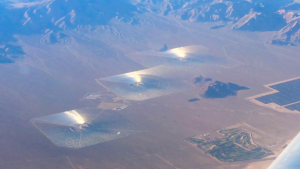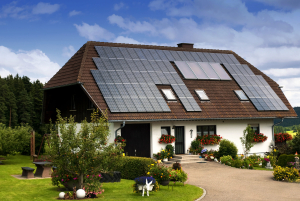
Fracking made the USA energy independent for the first time in decades. Outside its impact on the environment, the boom was short-lived.
By 2014 demand was beating supply, and the boom has now turned to dust.
It wasn’t solar and wind power that killed the boom. It was efficiency and technology. LEDs require a lot less power than fluorescent bulbs. Intelligence added to warehouses and stores reduces the need still further. Insulation means you need less electricity for heating. New appliances are more energy efficient. The cloud is super-efficient, and the excess energy can be recycled. Laptop technology means this took less power to write than it would have then.
The oilpatch did its bit to kill the boom, too. There are now huge oilfields off South America and Africa that we didn’t know about before. The eastern Mediterranean gas fields have made Israel independent of Arab energy. Things like fracking and boiling the Alberta tar sands aren’t just environmentally destructive. They’re economically worthless.
All these things have put a thumb down on energy prices. That thumb is getting bigger over time. As I predicted in 2010 (based on Department of Energy research) we have now achieved “crossover,” the point where renewable energy costs less to exploit than fossil fuels. It’s hard today to justify a new natural gas plant. Soon, solar will cost less than gas fired in an existing burner.
The result is going to be another energy boom, this time a renewable energy boom.
But this one, too, has a sell-by date.

We saw what happened in the last decade when the supply of renewable energy became greater than the grid wanted. Utilities just refused to take it. Some of that supply could now be off-loaded to produce “green” hydrogen (“blue” hydrogen is produced from natural gas) but demand for renewable power isn’t unlimited. It can grow, but it’s not unlimited.

If you put solar panels on your roof at the height of the oil boom with a Power Purchase Agreement at that year’s price, I have bad news for you. You now own an expensive white elephant that may make your home harder to sell.
Efficiency drives out inefficiency. That’s true for renewable energy as it is everywhere else. Which brings up the second type of plant that may go bye-bye before it’s paid for.
These are utility-scale systems with high ancillary costs. The cost of transmitting power across the country is one such ancillary cost. Land is another. Solar and wind projects don’t cause the same problems as nuclear or coal plants, but utilities are situating them hundreds of miles from demand as though they do.

The point is that, before you invest in renewable energy today, you need to look ahead. You need to see if your costs are going to be competitive – all your costs – in 2030 as they are in 2021.
In an economics of abundance, such dangers accelerate. You have an example right in front of you. Your Windows XP machine from 1997 could, in theory, continue to work, but it’s in the landfill. So should be your 2005 iPod. They’re not just slow, they’re energy hogs.
It will be the same way with renewable power equipment.
I remember getting my first PC over 40 years ago. I had to borrow money to get it, and I had to write it off over time. Computers were capital equipment then. In 2021 even clouds are written down as they’re built, with cash flow instead of loans.
It will be the same way with renewable energy. Know that now, you’ll see where the mistakes were made later.










